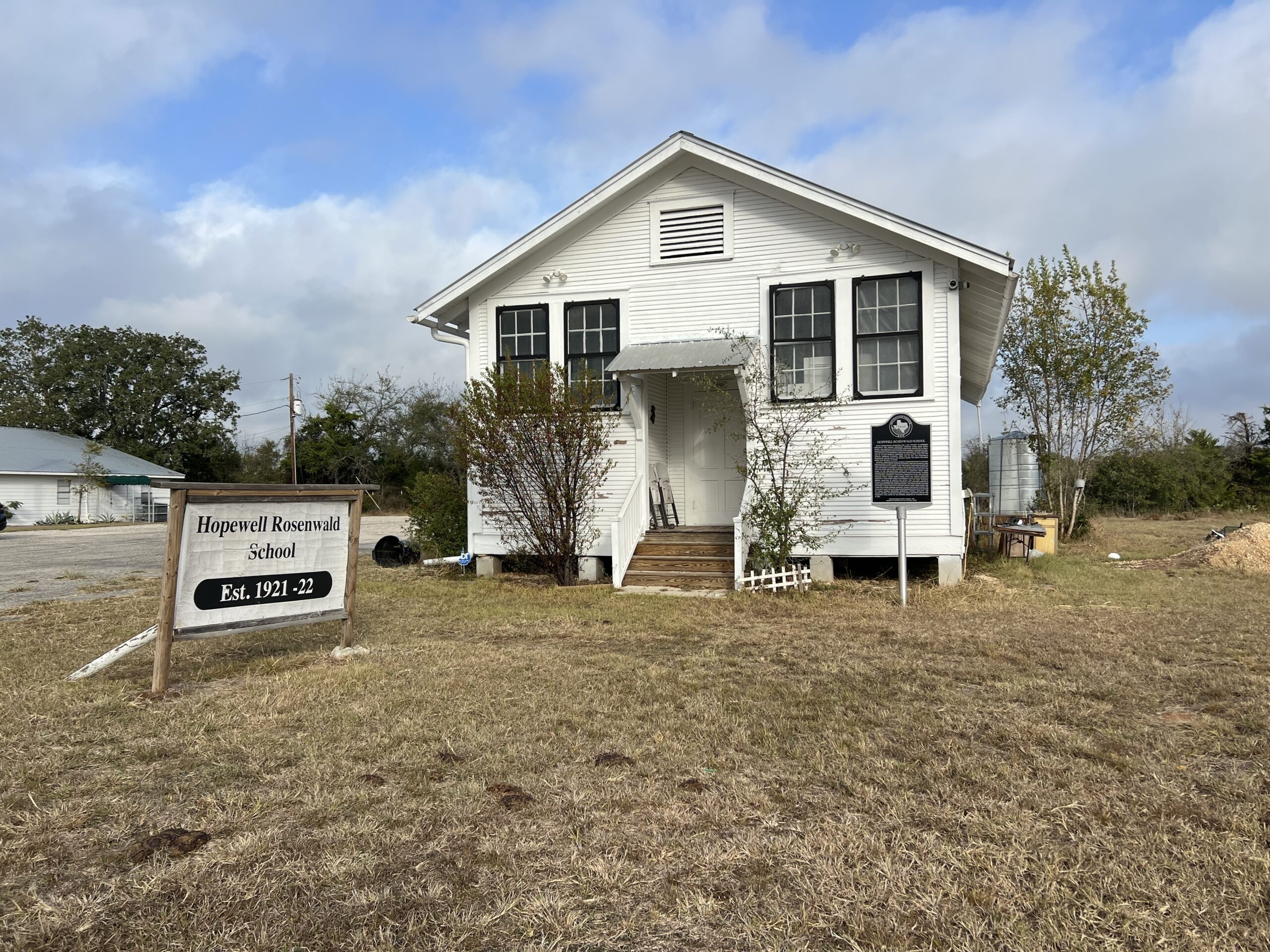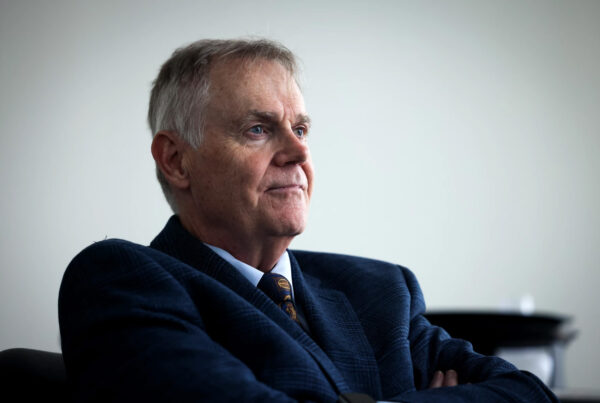“Money may be the root of all evil in one sense, but it is also the root of all the universities, colleges, churches and libraries scattered through the land.” – Andrew Carnegie (1906)
Two weeks ago, the Bullock Texas State History Museum unveiled a temporary exhibition about Black education in the early 20th Century.
“We’ve been planning this for months,” said curator James McReynolds. “It’s a culmination of a lot of hard work.
“A Better Life for Their Children: Julius Rosenwald, Booker T. Washington, and the 4,978 Schools that Changed America” features twenty three black and white photos documenting some of the early schools Black students attended in the American South in the decades after slavery was abolished.
“They did not have running water or electricity,” explained McReynolds. “So these schools needed stoves to keep the buildings warm in the winter to cook food on.”
Public education didn’t exist in the South before the Civil War.
The development of school systems was part of the Reconstruction process. But because of racist policies by state legislatures, large funding disparities developed between the segregated white and Black school systems.
“The Freedmen’s Bureau, organized by the federal government, founded several schools in the state that offered classes to African Americans,” wrote the Texas Historical Commission. “But Texas’ segregated public education system continued to underfund African American scholastic activities.”
To address this inequity, northern philanthropists with a soft spot for the plight of Black Americans used their wealth to influence Southern politics and subsidize Black education.
The new Bullock exhibition highlights the efforts of perhaps the most influential of these wealthy donors, a man named Julius Rosenwald.
“Rosenwald was the president of Sears, Roebuck and Company, which was the largest company in the world at the time,” explained McReynolds. “He heavily believed in the importance of education.”
To transform his fortune into social progress, Rosenwald worked with the most influential Black American of his day.
“He partnered with Booker T. Washington,” said McReynolds. “They wanted to tackle this racial education gap.”
Born into slavery, Washington was head of the The Tuskegee Normal and Industrial Institute, the largest and most important Black institution at the turn of the 20th Century.
From 1912 to 1932, Rosenwald used his personal fortune and Washington’s knowledge of Black education to sponsor the construction of around 5,000 schools, mostly in the rural South.
When funds were made available for Texas in 1920, local governments and communities took advantage. Of the fifteen states where Rosenwald-subsidized buildings were constructed, only two received more buildings than the Lone Star State.
“The Rosenwald Fund supported the construction of nearly 500 schools in the state of Texas,” said McReynolds. “And it also supported the construction of teacher’s homes and industrial shops in 82 different counties.”
At one point, around 5,000 Rosenwald schools were scattered throughout the American South. But after integration, the majority of these early educational institutions were abandoned and have since fallen into disrepair.
» TEXAS MUSEUM MAP: Explore more museums across the Lone Star State
In addition to photos, the exhibition at the Bullock also features artifacts from three former Rosenwald schools around Texas.
“The first artifacts you’re going to see when you come into the gallery are from the Hopewell School in Bastrop County,” said McReynolds. “We have a student desk. We have a potbelly stove and we have a portrait of some of the relatives that donated the land for the construction of the school.”
On the exhibition’s back wall, there’s a large map of where Rosenwald schools were located in Texas.




















